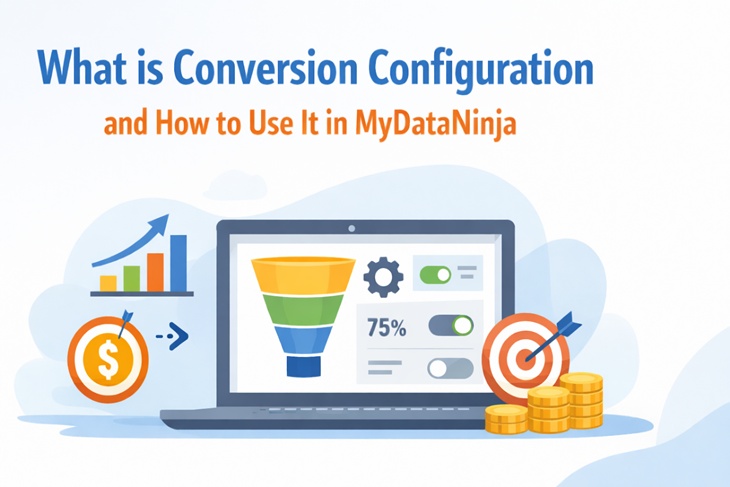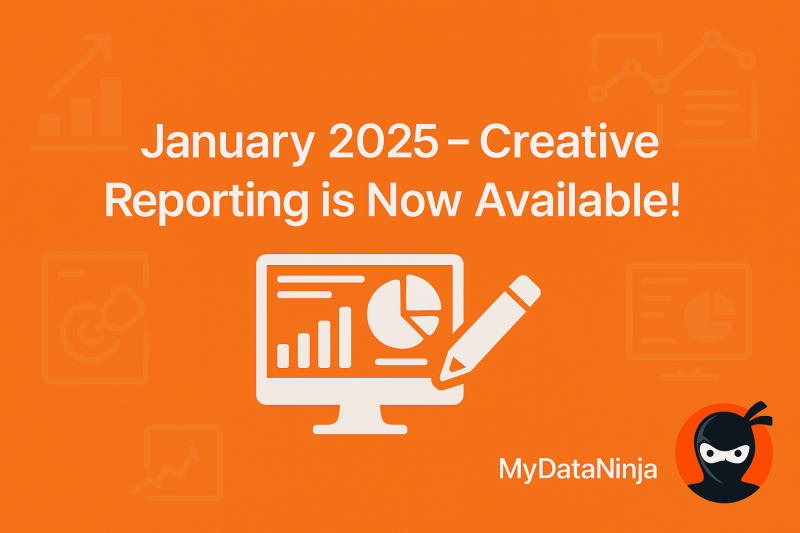
I am sure those acronyms confuse you every time you watch them in your data analytics tools. You stare at them for hours and still don’t understand what they really mean. No need to worry though, today I will explain most of the important metrics for you, tell you what the key metrics that make up ROAS are, and how they work together to determine your ROI.
ROAS (Return on Ad Spent)
First of all, let’s figure out what ROAS means. ROAS is short for return on Ad spent. It tells you how much money you are making from every dollar spent on advertisements. This helps you understand how profitable your marketing campaigns are and also assists you in better marketing decisions.
The formula is simple: Total revenue generated / total advertising spend = ROAS
Let’s see the example: $2000 / $1000=$2
A higher ROAS indicates that your advertising is more effective at driving revenue, while a lower ROAS tells you that you may need to optimize your campaigns to improve profitability.
CPM (cost per thousand impressions)
The CPM is money spent on 1000 Ad impressions, easy as that. Now, every time your advertisement is displayed, it does not matter if it’s clicked or not, it is counted as 1 Ad impression. CPM is mostly used in display advertisements, meaning you pay based on the number of times your Ad is shown to potential users.
Formula: (Total spend per Ad campaign / total impressions generated)X1000= CPM
Example: ($1000 / 200 000 impressions) X1000 = 10
A lower CPM means you are paying less for each Ad that gets displayed, whereas a higher CPM means you are spending more, but your Ads are reaching a more targeted and interested audience. This decision is on you, you can have less CPM, but show your advertisement, or choose a higher one and concentrate on an “expensive” audience that can result in more conversions and higher average order value (AOV).
AOV (average order value)
Now, that we mentioned AOV in the previous subject, let’s explain it better. The average order value calculates the average amount spent on each customer who placed an order on your app or website. This metric gives insight into your customer’s purchasing behavior and the overall health of your business.
Formula: Total revenue generated over a specific period/number of orders placed during that same period = AOV
Easy example: $ 20,000 in March / 100 orders in March = $200
AOV affects how much money you make from each customer. When customers spend more per purchase, you earn more revenue and get a better return on your advertising efforts.
CTR (click-through rate)
CTR measures the times your Ad got clicked by the people who saw it. It indicates how interesting and engaging your content is to the targeted audience.
Here is a formula for you: (Number of clicks received per ad/impressions generated) X 100 = CTR
Example: (200 clicks/ 10 000 impressions)X100= 2%
Low CRT indicates that your advertisement is not interesting or engaging for the targeted audience you chose, while high CRT means that your Ad is interesting and people find it useful. CTR is different for industries and Ad platforms, but most of the time you should be aiming for above 1%.
It’s also worth mentioning that platforms like Google and Meta consider CTR when determining your Ad’s quality score and relevance. This can affect how often your ad is seen and how much you pay per click.
CVR (conversion rate)
CVR indicates how many people took a desired action after visiting your website, desired actions might be purchases, filling out the applications, or signing up. This determines how effectively your advertising and website are turning visitors into active users.
To figure out CVR, take the number of conversions and divide it by the total number of interactions with your Ad, like clicks or impressions. Then multiply by 100 to get a percentage. For instance, if your Ad gets 100 clicks and 10 of those turn into conversions, your CVR would be 10% (10 divided by 100, then multiplied by 100).
Here is a formula for a better view: (Number of conversions / total number of ad interactions, like clicks or impressions)X100 = CVR
Example: (20 conversions / 100 clicks) * 100 = 20%
CVR directly impacts the revenue generated from your advertising efforts. A high CVR means that people intersecting with your Ads take meaningful actions that turn them into loyal customers. Again, CVR varies by industry or Ad platform, but the baseline for CVR is above 2%
CPC (cost per click)
CPC tracks how much you pay for each click your Ad accumulates. It’s a popular pricing model for search engine advertising (like Google) and social media advertising (like Meta). With CPC, you only pay when someone actually clicks on your Ad, rather than paying for views or other types of engagement.
The formula for CPC: Total cost of Ad campaign/number of clicks received = CPC
Example: $500 / 100 clicks = $5
Just like CTR, CPC affects how much it costs to get new customers. A lower CPC means you’re spending less for each click, helping your advertising budget go further.
But it’s also important to balance CPC with other metrics like conversion rate. You want to make sure the clicks you’re paying for lead to real actions, like purchases or sign-ups. Sometimes, it’s worth paying a higher CPC if it means reaching an audience that’s more likely to convert.
CPA (cost per acquisition)
CPA, also known as cost per action or cost per conversion, indicates how much you pay to acquire a new customer or conversion. It’s a crucial measure of how effectively your advertising efforts drive meaningful actions, such as purchases or sign-ups.
Here is a formula: Total cost of ad campaign/Number of acquisitions it generates = CPA
Example: $2000 / 100 conversions = $20
CPA shows how much it costs to get real results from your Ads. A lower CPA means you’re spending less to bring in each new customer or conversion, which can boost your ROI. But it’s crucial to consider metrics like average order value (AOV) and customer lifetime value (CLV) too. You want to make sure the customers you’re acquiring are not just costing less upfront but are also profitable for your business in the long run.
Here’s how these metrics team up to evaluate your ROI:
Understanding how these metrics determine your ROI is important for better and smarter use. Let’s figure out how those metrics interact.
CPM and CPC
These two metrics are the beginning of the funnel. CPM measures the cost for every thousand Ad impressions, determining the Ad visibility. The cost per click (CPC), which is what you pay for each click on your Ad, can be reduced with a high Click-Through Rate (CTR). A higher CTR suggests that your Ads are engaging and relevant. Improving CTR not only lowers CPC but also brings more qualified traffic to your website.
CVR and CPA
Let’s dive a little deeper into the funnel, CVR measures the percentage of clicks that resulted in conversion, implementing effective Ad campaigns and great call-to-actions. Cost Per Acquisition (CPA) combines the costs of clicks and how effective they are at converting, revealing the total expense to acquire a customer.
ROAS and AOV
At the end of the funnel, there are ROAS and AOV. return of Ad spent reflects the revenue earned per dollar spent on advertising, closely tied to Average Order Value (AOV). AOV tells you how much customers spend on every transaction, actively influencing ROAS. For example, if CPA decreases while AOV increases, ROAS might decrease less sharply, highlighting how these metrics interact delicately.
By understanding these metrics, starting from CPM to ROAS, you get a better idea of how they interact with each other. By understanding these metrics, you make better decisions, put them to better use, and improve your overall results. In the end, you will use all of them to optimize each stage of the marketing funnel for better ROI.
Marketing Efficiency Ratio (MER)
With MER, you can determine how well your marketing campaigns or strategies are performing.
Formula: total revenue / total ad spend = MER
Example: $40,000 / $10,000 = 4
Since MER is expressed as a ratio, we report this as: 2.0.
You might notice this sounds a bit like ROAS, but there are some differences. ROAS tells you how much money you earn for every dollar you spend on Ads. Meanwhile, MER looks at all the effects of your marketing efforts, including Ad spend, to figure out how efficient your campaigns are.
The ideal MER value varies depending on the industry, but generally, aiming for above 3.0 is recommended. In E-commerce, where production costs can be substantial, it’s often better to aim for even higher MER values, ideally above 5.0.
Monitoring MER is crucial because advertising spending directly impacts daily revenue. It provides a clear picture of how well your business is performing and whether your marketing efforts are generating positive returns.
Now, for you to not confuse any of these metrics, and to use them to their full potential, you should use the MyDataNinja tool. We help you optimize your marketing strategies, better understand and use necessary metrics, and assist you in making better and faster decisions.
Join us and get a 7-day free trial.







